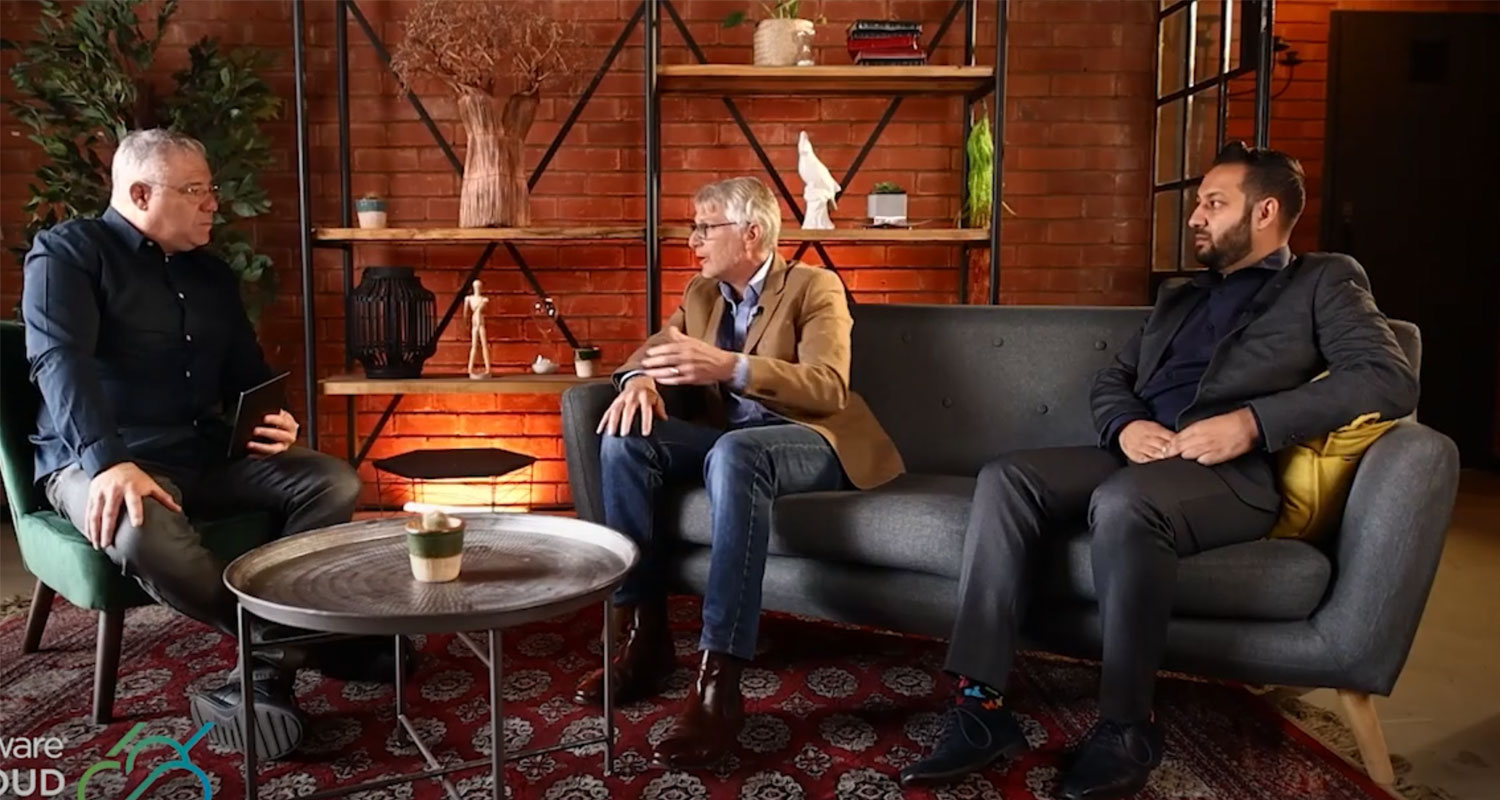For many businesses, Covid-19 meant adapting and evolving, and making tough business decisions to suit and make sense of the new business environment organisations found themselves in. The cloud landscape was no exception as it played a crucial role in day-to-day transformation. The bottom line: change remains the name of the game.
Sumeeth Singh, head of cloud provider business for sub-Saharan Africa at VMware, and Jeff Jack, principal practice head for cloud at Dimension Data, chat in this interview with Aki Anastasiou (watch it above) about the current digitisation space in the South African market. In the conversation, Jack considers the transformation within the cloud landscape an exciting time but cautions that it was also a knee-jerk reaction for many cloud service providers and partners, who may have oversold inferior solutions.
Digital adoption and transformation in the cloud landscape
“Businesses are rapidly deciding to move their infrastructures online and into the cloud to maintain a cloud presence and take advantage of a digital footprint that will enable them to continue running in the event of a repeat of an event like the pandemic while still serving their customers,” says Jack.
Singh, meanwhile, says cloud adoption was already under way when the pandemic hit, and organisations were at varying levels of cloud adoption.
“The Covid-19 pandemic became a catalyst to get cloud adoption fast-tracked. In fact, I like to call it the famous ‘Covid cloud catalyst’, where cloud service providers and partners saw the need to shift their environment and infrastructures digitally to gain and remain agile,” adds Singh.
Cloud infrastructure needs and demands
In Jack’s opinion, with extensive constraints and a better grasp of the cloud landscape, clients’ needs became different. They started looking for different ways to consume data and flexibility within how they are served their data. And so they sought a cloud infrastructure that provides them with a better chance of business continuity and resilience.
With a longstanding collaborative partnership with VMware, Dimension Data says it can deliver on these demands because it firstly understands the transformative nature of the cloud and second, its clients trust VMware solutions.

“VMware is a pioneer of virtualisation with the ability to consolidate and run multiple workloads on a single piece of infrastructure, right at the first step. But what this means today is that we can deliver a multi-cloud experience as we understand how to adapt and provide a unique cloud infrastructure, have partnerships with the hyperscalers, and partners like Dimension Data that bring the local flair of a trusted advisor in the cloud space. All these factors meld together to deliver a multi-cloud strategy and story to customers while providing the comfort of knowing everything in their cloud is secured,” says Singh.
Mistakes made by customers in cloud adoption
While cloud adoption and the digital transformation era are painting the town red within the cloud space, Jack and Singh argue that this era is still in its infancy. The common mistake customers make is not understanding which type of applications and workloads to use for their data infrastructures. This highlights the fact that cloud roles are no longer binary, but rather there is a role for hybrid and private clouds, as well as a need for the hyperscaler/public cloud.
With many customers still supporting monolithic legacy applications to provide their services, their goals to digitally transform and ensure their old system talks to a new system is severely impacted. But if they are to speed up transformation and run efficiently and effectively with the predictable performance, security and compliance – they need to start looking at how a hybridity of solutions can help them.
To conclude, IT (and the cloud) is driving new business outcomes and providing consumptive ways of consuming data vs traditional ways of setting up infrastructure. The conversation around the benefits of new and old is answered with the fit for purpose approach that is today offered by cloud service providers and partners.
- This promoted content was paid for by the party concerned




